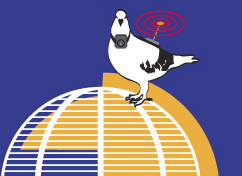 digital storytelling, Pakistan, vegetable cart, heritage, multimedia, community, culture, Karachi, urban digital storytelling, Pakistan, vegetable cart, heritage, multimedia, community, culture, Karachi, urban
For this project, still under production, local community culture was interpreted for a global audience through my interactions. Multimedia is being used to bring all the participants together in one installation. With the help of digital technology I will be attempting to capture, then present some integral contributions that the presence of the vegetable-cart and its owner has made to the communities of Karachi.
Abstract Without it, lunch could be a bland, tasteless affair. Every morning it is pushed by a vendor through the residential lanes of crowded Karachi neighborhoods. It's wooden structure is versatile enough to overcome all obstacles when reaching even the remotest house on the block. As he walks, the vendor announces himself with a loud cry every few seconds. A welcoming reception awaits the cart and the vendor from most houses. When some home-makers complain about the wares bought the day before, the vendor reassures them most convincingly that his vegetables are the finest. After the selection of the day is made and the final price agreed upon by both parties, the deal is made and the vegetable-cart owner is ready to move on to the next house. In the large metropolis of Karachi, Pakistan, the scene described above is one that marks the start of every day in most households. Cooking is an essential part of Pakistani living. Given the right blend of ingredients even the most simple food such as lentils can taste like a dish fit for royalty. Many ingredients such as the coriander leaf used for garnishing food are needed fresh for that day. At a time when other members of the family are at work or in school it is a great relief to have the vegetable-cart man make his rounds for it could make the difference in that day’s meal. The cry of the vegetable seller resounds in my subconscious mind as an integral part of my daily living experience. It marks my childhood memories, not because of any interaction followed by it but because it could be reassuringly heard every morning. As a woman of the house now I hear this cry with a new understanding, that of the transaction it makes possible. On occasions that I have been away from my country I have sorely missed this part of my daily routine. I value it very much. Using a multimedia presentation I would like to present the diary of a vegetable-cart. With the help of digital technology I will be attempting to capture, then present some integral contributions that the presence of the vegetable-cart and it’s owner has made to the communities of Karachi. The interactive multimedia presentation would be based on audio and visual interviews with one or more vegetable-cart men, physical aspects of their being, their interactions within the community and a few issues surrounding their existence. As a digital artist presenting my work to an international audience, I feel that there has to be included something in the presentation that would connect directly with a viewer even if s/he is viewing the life of the vegetable cart as a strange and new experience. In this multimedia presentation, one of the icons on the main screen would lead to pages which would describe through mainly through images and little text, some typically South Asian vegetables, their nutritional content and a few recipes on how to prepare them. |
